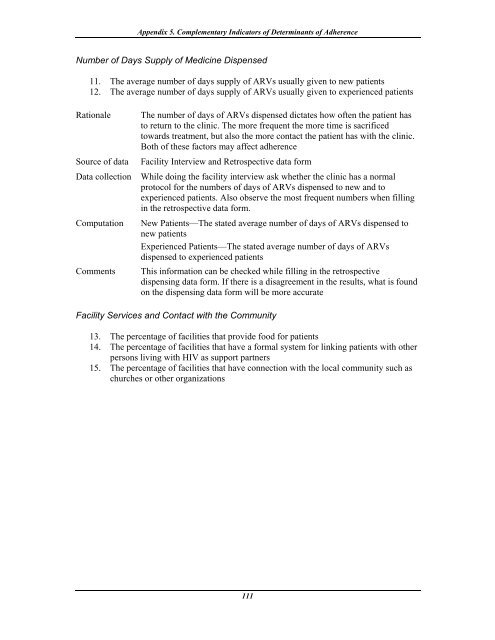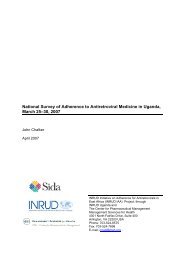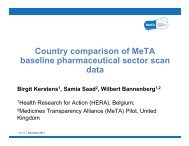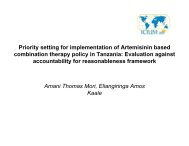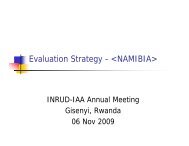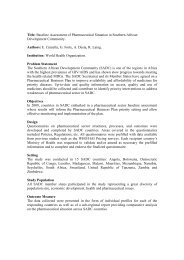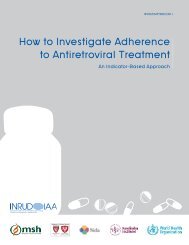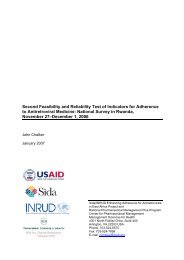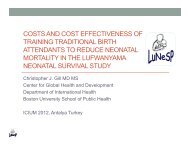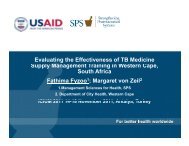How to investigate Adherence to Antiretroviral Treatment ... - INRUD
How to investigate Adherence to Antiretroviral Treatment ... - INRUD
How to investigate Adherence to Antiretroviral Treatment ... - INRUD
Create successful ePaper yourself
Turn your PDF publications into a flip-book with our unique Google optimized e-Paper software.
Appendix 5. Complementary Indica<strong>to</strong>rs of Determinants of <strong>Adherence</strong><br />
Number of Days Supply of Medicine Dispensed<br />
11. The average number of days supply of ARVs usually given <strong>to</strong> new patients<br />
12. The average number of days supply of ARVs usually given <strong>to</strong> experienced patients<br />
Rationale<br />
Source of data<br />
Data collection<br />
Computation<br />
Comments<br />
The number of days of ARVs dispensed dictates how often the patient has<br />
<strong>to</strong> return <strong>to</strong> the clinic. The more frequent the more time is sacrificed<br />
<strong>to</strong>wards treatment, but also the more contact the patient has with the clinic.<br />
Both of these fac<strong>to</strong>rs may affect adherence<br />
Facility Interview and Retrospective data form<br />
While doing the facility interview ask whether the clinic has a normal<br />
pro<strong>to</strong>col for the numbers of days of ARVs dispensed <strong>to</strong> new and <strong>to</strong><br />
experienced patients. Also observe the most frequent numbers when filling<br />
in the retrospective data form.<br />
New Patients—The stated average number of days of ARVs dispensed <strong>to</strong><br />
new patients<br />
Experienced Patients—The stated average number of days of ARVs<br />
dispensed <strong>to</strong> experienced patients<br />
This information can be checked while filling in the retrospective<br />
dispensing data form. If there is a disagreement in the results, what is found<br />
on the dispensing data form will be more accurate<br />
Facility Services and Contact with the Community<br />
13. The percentage of facilities that provide food for patients<br />
14. The percentage of facilities that have a formal system for linking patients with other<br />
persons living with HIV as support partners<br />
15. The percentage of facilities that have connection with the local community such as<br />
churches or other organizations<br />
111


